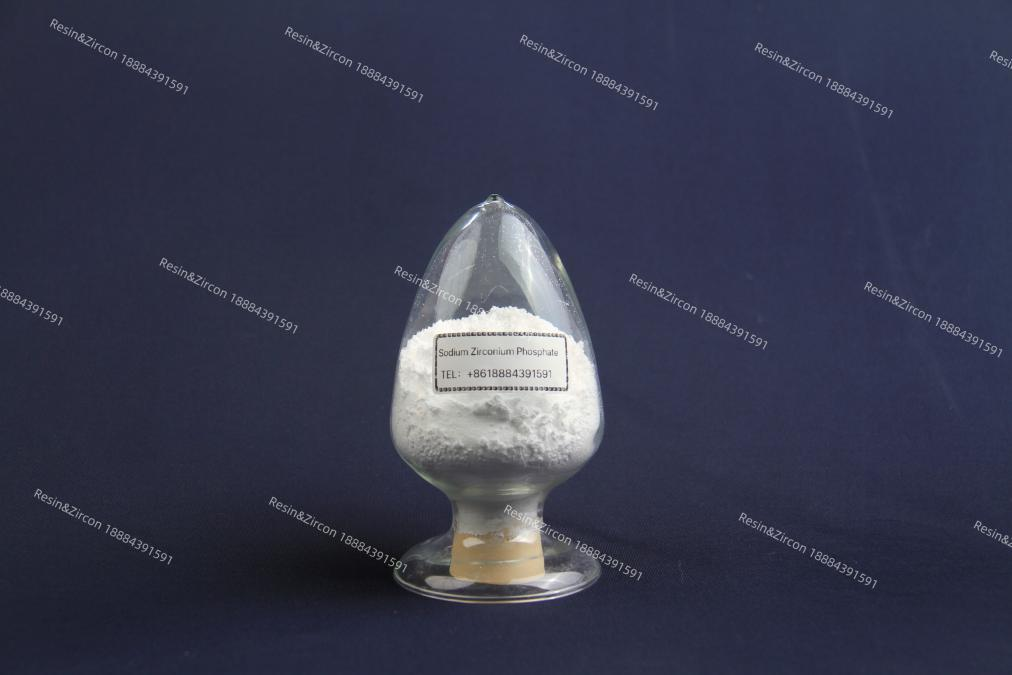Sodium Zirconium Phosphate
Zirconium phosphate (NaZr₂(PO₄) ₃) is a kind of multi-functional inorganic material with unique ion exchange, high specific surface area and good thermal stability. It is widely used in antibacterial, catalytic, medical, environmental protection and other fields.

Scope of Application:
1. Antibacterial Material
-Plastic products (such as antibacterial masterbatch, toys, medical devices).
-Textiles (such as antibacterial fibers, insoles, medical dressings): Ag⁺is embedded into the fibers by ion exchange technology.
-Ceramics and coatings: Add to ceramic glazes or coatings to enhance antibacterial properties.
2. Medical Field
-Hemodialysis: Sodium zirconium phosphate is used to regulate the balance of electrolytes such as K⁺and Ca²⁺in the blood. It is recommended to add 425g/L to the dialysate for a single time.
-Wound dressings: Composite zirconium phosphate dressings can absorb exudate and promote healing, and the market penetration rate is increasing year by year.
3. Environmental Protection and Catalysis
-Waste water treatment: adsorption of heavy metal ions (e.g. Cr³⁺), the recommended dosage should be adjusted according to the concentration of pollutants.
-Catalyst carrier: used in petroleum processing and organic synthesis, high temperature resistance and good stability.
4. Electronics and New Energy
-Solid electrolyte: The fast ionic conductivity of zirconium sodium phosphate is suitable for sodium ion batteries.
-Low expansion ceramics: used for high temperature structural materials, such as aerospace components.
1. Product features
1.1 High specific surface area and porous structure: The large specific surface area (usually>100 m²/g) and the pore structure are conducive to the loading and slow release of metal ions.
1.2 Excellent ion exchange capacity: Sodium ions (Na⁺) can be easily replaced by other metal ions (such as Ag⁺, Zn²⁺) to form antibacterial materials.
1.3 Thermal stability: high temperature resistance (>1000℃), suitable for high temperature processing environment (such as ceramics, plastic modification).
1.4 Chemical stability: insoluble in water and organic solvents, acid and alkali resistant, suitable for long-term use.
1.5 Nano particle size: Ultrafine zirconium sodium phosphate (<500 nm) can enhance antibacterial effect and dispersion.
2. Suggested addition
It depends on different application scenarios:
2.1 Antibacterial plastics/rubber: 2-3% (can be made into masterbatch and mixed again)
2.2 Antibacterial fibers: 8-10% (masterbatch), 2-3% in the final product (surface treatment is required to improve compatibility)
2.3 Ceramic/glass: 6-8%
2.4 Hemodialysis fluid: 425g/L (reusable to reduce cost)
2.5 Wound dressings: as required by the formula (usually 10-20%)

Follow WeChat


